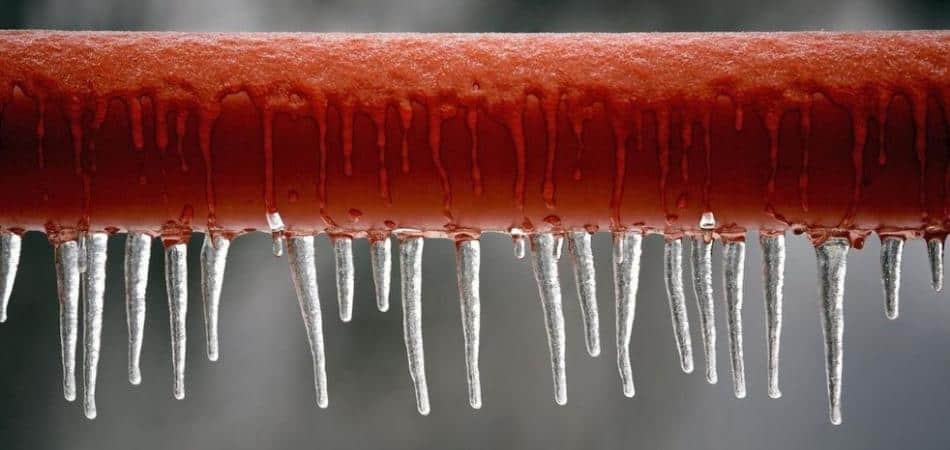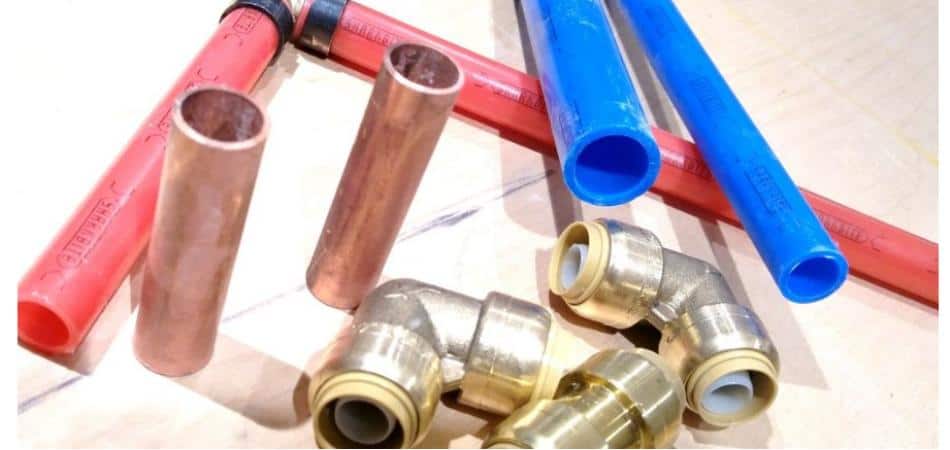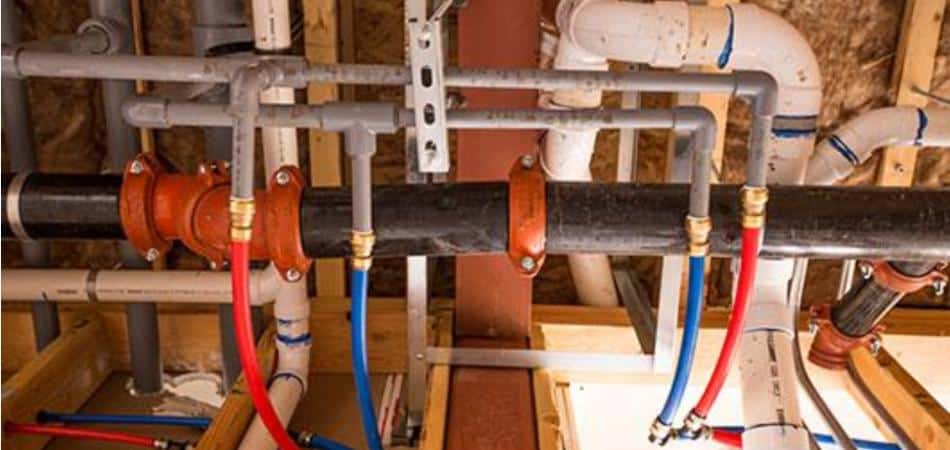This is typical in many lines during the year’s colder season, including PEX pipes. However, there are ways of forestalling these pipes from freezing. These methods keep you away from costly fixes.
PEX pipes give better execution than unbending lines, like copper, in frigid temperatures. Here, we will examine how to keep these pipelines from freezing.

Recommendations for Preventing PEX Pipes From Freezing
It would be best if you took action to prevent the freezing of water or other liquids inside PEX tubing. Since a channeling framework with frozen liquid can’t proceed true to form. For many models, a frozen pipe framework won’t convey water.
A frozen fire security framework won’t enact to quench a blast. A frozen liquefying framework won’t describe the intensity of the expected regions. And will leave them uncleared, which is more risky.
The following are suggestions for safeguarding explicit PEX frameworks against freezing:

● Raising the encompassing Temperature Or Room Temperature
The Pex pipelines freeze while the encompassing air gets freezing. Expanding your indoor regulator setting can raise the temperature. The temperature rises high for the ice to defrost.
Keep the room temperature over 55 Fahrenheit to forestall the chance of freezing. The temperature plunging above the mentioned temperature causes water to freeze in pipes.
● Plumbing and Fire Safety
Introduce PEX tubing inside heated spaces. For example, plumbing conveyance establishments use walls, floors, or roofs.
The PEX manifold manufacturers introduce PEX tubing inside walls, floors, or roofs.

To prevent the water inside from freezing, we should protect this tubing. We need so much protection to do these security changes.
However, these are different for each environmental zone and area all over the planet. Nearby construction standards and guidelines ought to apply.
● Adding Insulation to avoid freezing
You can forestall your PEX pipes from freezing by adding insulation. This insulation can be applied to storm cellars, carports, storage rooms, walls, and entryways.
We likewise suggest protecting your line from outrageous temperatures. Keep up with legitimate insulation in cooler regions of your home, like carports. You should use foam to protect PEX pipes. Foam is the most well-known protection material for pipes since it is adaptable. This insulation permits them to function with molded items like PEX pipes.
Regularly cleaning the lines involves a wet cloth before enveloping them with foam. Seal the PEX tubes using insulation tape on the froth protection’s closures. This helps to avoid freezing in extreme weather conditions in winter.
● Placing the PEX Pipes Beneath the Ground Frost Lines
If introducing it under the ground outside, try to bury the PEX pipelines beneath the ground ice line. For example, for open-air wood boilers, heaters, and principal/administration lines.
A few water manifold manufacturers offer pre-protected PEX pipes. These folded pipes encase a larger measurement.

In water administration applications, you should take care. It guarantees that PEX tubing is covered beneath the ice line to forestall freezing. This is done to keep away from interfering with the water supply.
● Giving Pex Pipes a little room to Breathe or Expand
PEX will extend and contract with the temperature change. That is why you should not pull it tight during the establishment.
If there should be an occurrence of a 60F temperature increase, 100 feet might stretch as much as 15″.
Use tube claws and line clasps that permit pipe development without harming it. You can also use structure extensions around the lines that convey high-temperature water. The inability to get the line will overemphasize it. This afterward may cause mechanical harm, even breaks and leakages.
● Using Hot Water Distribution Framework/ Recirculation System
Use a boiling water distribution framework without a devoted return line. This method maintains a consistent heated temperature in pipes and at the installation.
Such a framework will likewise assist with killing and washing tepid water away for good. At the same time, trust that high-temperature water will show up from the warmer.
Some Models use a cold water line as a return line to flow the water. This is safeguarding both hot and cold lines against freezing. Make sure to check these pipes for consistent distribution. Everhot PEX is among the lines that fulfill this guideline.
For the best Pex manifolds, visit Plumberstar.
● Keep PEX Pipes Away from Direct Sunlight
Get PEX far from daylight. PEX will become fragile whenever presented to daylight for a long time. And may break under tension. However, the limitation of PEX may be longer than that of other plastics. The regular openness limit is ~30 days.
A few makers offer PEX pipe with added inhibitors, which might stretch openness time to a half year. But still, we are aware that there are no long-lasting arrangements.
● Introducing A Freeze-Proof Sillcock
The gate valves use Freeze-proof sillcocks for freeze obstruction. They help control the progression of water in the lines.
● Complete Draining of the PEX Pipes
It would be best if you drained the entire pipe arrangement of your home. This method will help prevent extra water from freezing inside the lines. Take care of it in your country estates or when your house is abandoned or unheated.

Make a point to switch off your fundamental water line. Many pipe fitting manufacturers introduce it in the frameworks before opening each fixture. This helps deplete the water inside the lines.
● Allow Your Faucets To Dribble Drop-By-Drop
Let the indoor faucets spill in spells of chilly climate. This dribbling of water eases harming tension in pipes assuming ice structures. Turning an indoor faucet to trickle during freezing times keeps the water streaming.
This method keeps sitting water in the lines from freezing. This decreases the risk of blasting lines when ice structures are inside. This guideline is also sometimes mentioned in the manual by many faucet manufacturers. This protects the jamming of faucets in winter.

Knowledge of the Freezing Temperature of PEX Pipes
The above recommendations will help you prevent freezing PEX pipes. But before this, you should know about the temperature limitations of PEX pipes.
PEX offers an expected benefit over inflexible pipes like copper or rigid PVC. Because of its adaptability, PEX has a little edge. It is sustained by the harmful tension brought about by ice development.
If the weather conditions are cold, like any pipes, PEX lines can and will freeze. Temperatures of 20° F and lower will cause ice in uninsulated water lines, making them freeze.
A wide range of lines can freeze, regardless of your line’s material. Despite this, PEX might be less inclined to burst because of freezing. Makers will not give an assurance against burst.
Thawing of Frozen PEX Pipes
Let me share some techniques in case your PEX pipes get frozen.
● Hot Water Infusion Technique
You can defrost frozen PEX tubing using available boiling water infusion gear. This utilizes heated water splashed forward by a spout.
It introduces an open line finish to liquefy ice inside the line. Perform this at warm water temperatures.
The most significant water temperature in defrosting is 180°F (82°C). After defrosting, you can return PEX to provide support.
Many advanced drainage systems introduce this at the time of the pipe installation.
● Attaching Heat Follow Cable/ Check Meter
You can also perform thawing by installing the heat trace cable or meter. Moreover, people refer to it as a heating tape attached to PEX tubing.
The cable must be automatic, self-restricting, and recommended for use on plastic lines.
One might leave the heat trace cable connected to PEX tubing. It prevents the release of heat for the underfloor heating manifold.
Click here to check the underfloor heating manifold makers for customized options.
● Applying Hot Air with Air Dryers
Hot air is usually applied to PEX tubing to defrost the frozen pipes. You can use a hot compressed air firearm to warm the frozen region of the line. The temperature doesn’t surpass 180°F.
The ice ought to defrost long before this temperature reaches. Another option is to use a hair dryer or a warm cloth to defrost ice inside the line.

If the problem persists, PEX pipes won’t thaw using the above techniques. Then, call a professional or expert.
Final Thoughts
PEX pipes are an extraordinary choice when picking your outside plumbing pipe material. While it can freeze, these lines won’t freeze as different materials.
Also, if they do freeze, the lines will extend. And it will prevent the line from exploding.
Common FAQs
What is PEX pipe?
PEX funneling represents cross-connected polyethylene and has increased ubiquity because of its flexibility. PEX has the adaptability that other funneling choices like copper can’t have. That adaptability can assist with keeping pipes from exploding and causing harm.
What Water pipes Don’t Freeze?
There are no water pipes that won’t freeze when the temperature decreases. PEX pipes are one of the most outstanding choices because they freeze less than others and have a lot of adaptability.
They are perfect if you live in chilly circumstances as they are less prone to burst, regardless of whether they freeze.
If PEX lines can endure frosty temperatures well, why must you protect them?
This is so because PEX pipes are freeze-safe. They are NOT freeze-proof. They can, in any case, break under very chilly temperatures. But you can keep this from occurring.
How can I determine if my PEX pipe is frozen?
A sluggish water stream is one of the primary signs you have frozen water in your PEX funneling. An ice blockage dials back the water stream and creates pressure. That pressure development can lead metal lines to explode.
PEX can extend to forestall exploding or bursting. Different signs remember spills at associations and ice for PEX funneling.
What Temperature Do PEX Lines Freeze At?
PEX pipes freeze at 20 degrees Fahrenheit when they are underground. If your PEX pipes are open outside, they will freeze at around 32 degrees.
